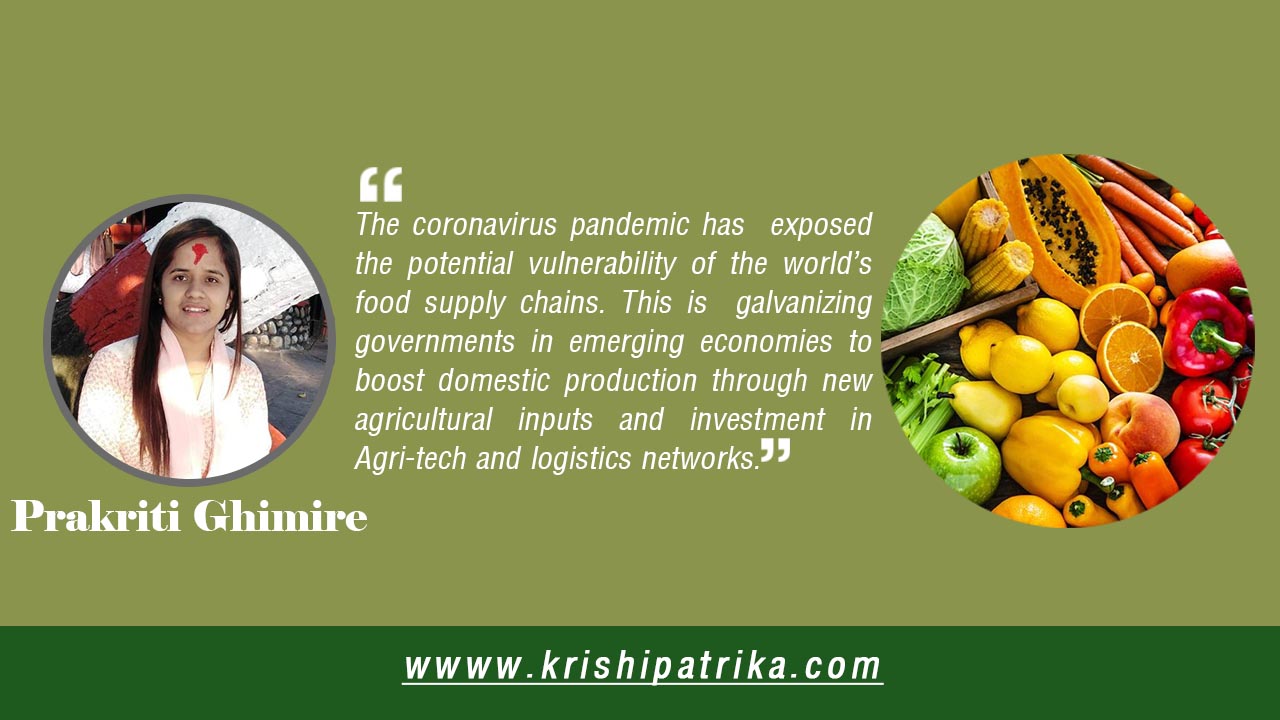
The seed is one of the most crucial elements in the livelihoods of agricultural communities. It is the repository of the genetic potential of crop species and their varieties resulting from the continuous improvement and selection over time. The potential benefits of seed to crop productivity and food security can be enormous. Every farmer should able to access healthy seeds that are genetically pure, with high seed vigor and good germination percentage. The timely availability of good quality seeds at reasonable prices ensures good yield and profit to the farmers. The seeds play a vital role in agriculture and act as a carrier of the genetic potential of varieties. Quality seed can be defined as varietally pure with a high germination percentage, free from diseases and disease organisms, with proper moisture content and weight. Quality seed production which follows efficient certification procedures plays a major role in the increase of food production of our country. The quality of seeds and young plants is important to end up with a good crop and with it good and plentiful availability of the products. Maximum profits can be reached by combining good seeds with the right cultivation methods. Good seeds and young plants also contribute to the efficient use of resources by local farmers, promote job opportunities, lead to safer and healthier food, and dealing with the effects of climate change. It ensures good germination, rapid emergence, and vigorous growth. These aspects translate to a good stand (whether greenhouse or field).
I. Food Security & Food Self-Sufficiency :
Food security is defined as the “availability at all times of adequate, nourishing, diverse, balanced and moderate world food supplies of basic foodstuffs to sustain a steady expansion of food consumption and to offset fluctuations in production and prices”. Food security can be measured by calorie intake per person per day, available on a household budget. In general, the objective of food security indicators and measurements is to capture some or all of the main components of food security in terms of food availability, accessibility, and utilization/adequacy. While availability (production and supply) and utilization/adequacy (nutritional status/anthropometric measurement) are easier to estimate and, therefore, more popular, accessibility (the ability to acquire the sufficient quantity and quality of food) remains largely elusive. The factors influencing household food accessibility are often context-specific.
Food self-sufficiency is an often-used term, but it is frequently left undefined by those who employ it. This may be because there is more than one definition of the concept. The FAO (1999) defines it in broad terms: “The concept of food self-sufficiency is generally taken to mean the extent to which a country can satisfy its food needs from its own domestic production.” Food self-sufficiency is not necessarily focused on where specific foods are grown, but rather on a country’s domestic food production capacity. Food self-sufficiency can also be measured in terms of a country’s dietary energy production (DEP) per capita. Food self-sufficiency, on the other hand, is focused on the supply, or availability component of food security, and is concerned with ensuring that the country has the capacity to produce food in sufficient quantities to meet its domestic needs.
II. In The Face Of The Pandemic :
The coronavirus pandemic has exposed the potential vulnerability of the world’s food supply chains. This is galvanizing governments in emerging economies to boost domestic production through new agricultural inputs and investment in Agri-tech and logistics networks. The UN’s World Food Programme (WFP) has warned that 265m people globally could face acute food insecurity by the end of the year – double the figure before the pandemic. This dramatic spike is based on a number of factors. For example, the lockdown measures have led to severe labor shortages in key agricultural areas, meaning that many crops were simply left to rot in fields. This was compounded by disruptions to local and international supply chains, which meant that some products did not make it to markets, suppliers, or export hubs, placing a further strain on supplies. As a result of shortages, the prices of key staples increased, which meant that many people in lower socio-economic demographics were unable to afford basic goods.
The above factors have combined with existing challenges, such as the impact of climate change on agricultural yields, to create an acute food security challenge. In light of this, countries around the world have been proactive in trying to stabilize food supplies. India is one of the biggest contributors to food goods in Nepal. The shortage in the supply of vegetables from India, rice exports were also halted from India, affecting food availability dimension of food security. During the on-going of lockdown, the harvesting of Wheat all over Nepal was only completed by 30-40% at around 13th April, and at the report of beginning of May it was completed by 80-90%, but the main problem here came by the restriction on the supply of those harvested wheat due to no transportation. 85 percent of traders reported that the supply of goods decreased, with 90 percent of traders reporting a decrease in transporting trucks and other vehicles. While maize sowing is going on in Nepal, reports of Fall Army Worm infestation in newly germinated maize crops in some of the districts have created fear in farmers (WFP, 2020b). Localized hailstorms and strong wind have affected winter crops, vegetables, and fruits in some parts of Provinces-1, 2, Bagmati, Gandaki, Karnali, and Sudurpashchim.
III. The Takeaway:
With the observation of the aforementioned qualities of quality seeds, we can come to a certain understanding of how much is the quality of seeds important for better crop stand and high input efficiency. Producing quality seeds is an effective tool to address the issues of self-sufficiency, food security, and economic development. For the assessment of quality seeds, the main things that matter are purity, germination, and moisture content of the seed lot. For that, certified seeds are highly used, which have really purity. Certified seeds are mainly four types: Nucleus seed, Breeder’s seed, Foundation Seed (I and II), and Certified Seed (I and II). If such seeds are available to the farmers, then it can be advantageous for them in many perspectives like uniform plant population and maturity. As they are also found to be profitable in terms of monetary as farmers can get high returns per unit area as the genetic potentiality of the crop be fully exploited, with the increased nutrient-use efficiency. It can be a sound material for transforming the agriculture of Nepal, mainly in rural sides, as it supports the saving of money of poor farmers, and high production and supply in the market from rural sides supporting the GDP of a country.









